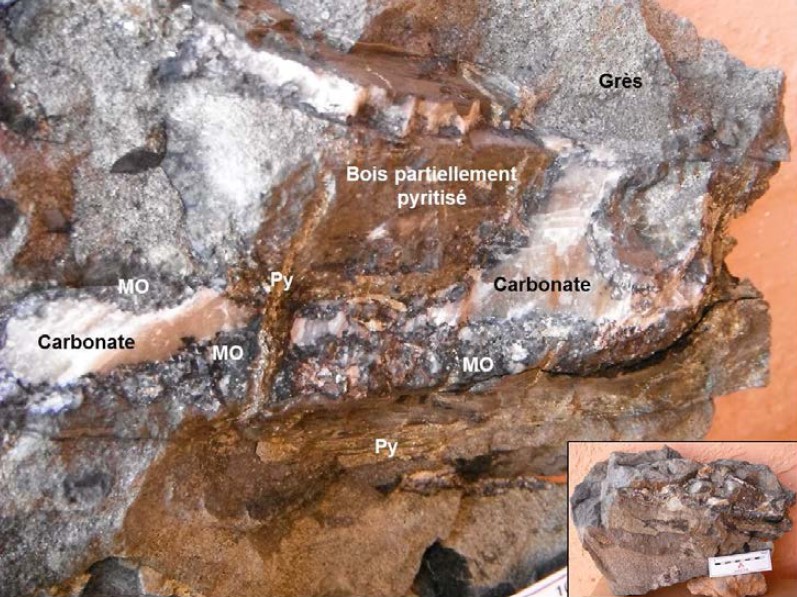Guezouman Fm
Type Locality and Naming
Lower formation of the Lower Tagora Gr
References: Fabre et al., 1983; Coquel et al., 1995; Wagani et al., 2011; Mamadou et al., 2016; Mamadou, 2016; Billon et al., 2016.
Synonym: Grès de Guezouman
Lithology and Thickness
It is thick with locally at the base a conglomerate level (Téléflak Mbr). It corresponds to a fluvio-deltaic unit showing in its upper part a tendency to emersion (mud-cracks, traces of rubefaction). Also, with organic-rich channel formations. Fine to medium grain sandstones with large horizontal stratification. Thickness is 25 m at Claret & Tempère (1968)’s section #3 (See map figure in In-Azaoua Gr). Host to the Akouta uranium deposit (Fig. 1).
Basal Téléflak Mbr is a conglomerate of rhyolite pebbles and phosphate nodules. Valsardieu (1971) provides the following description: The pebbles of the lenses of the Téléflak conglomerate vary in size from 1 to 5 cm, with rare elements reaching ten cm in diameter. Most pebbles have a spherical shape, like the more frequent phosphate sand nodules. The pebbles of rhyolites, quartz or rocks from the basement are also very rounded. The matrix is constituted by a medium to fine sandstone, identical to the ferruginous and siliceous sandstone at the Formation base.
[Figure. Sample 9650A-1 taken in the Akouta deposit of the Guezouman Fm displaying pyritized wood in brecciated sandstone with oblique stratifications (Source: Mamadou, 2016).]
Relationships and Distribution
Lower contact
Underlain by either the Talak Fm or the Tim Mersoï Fm. When the Talak Fm or Aoulingen Fm are absent, it lays on the Teragh Fm.
Upper contact
Overlain by the Tchinezogue Fm.
Regional extent
GeoJSON
Fossils
The Guezouman sandstones are rich in plant debris: Asterocalamites sp., Cyclostigma sp., Lepidodendron sp., Rhacopteris sp. They delivered a rich Visean microflora comparable to that known in Algeria in the surveys of the Eastern Grand Erg. Basal Téléflak Mbr has debris of silicified or ferruginized plants and rolled shells of Brachiopods or Lamellibranchs
Age
Depositional setting
Fluvial-Deltaic
Additional Information
